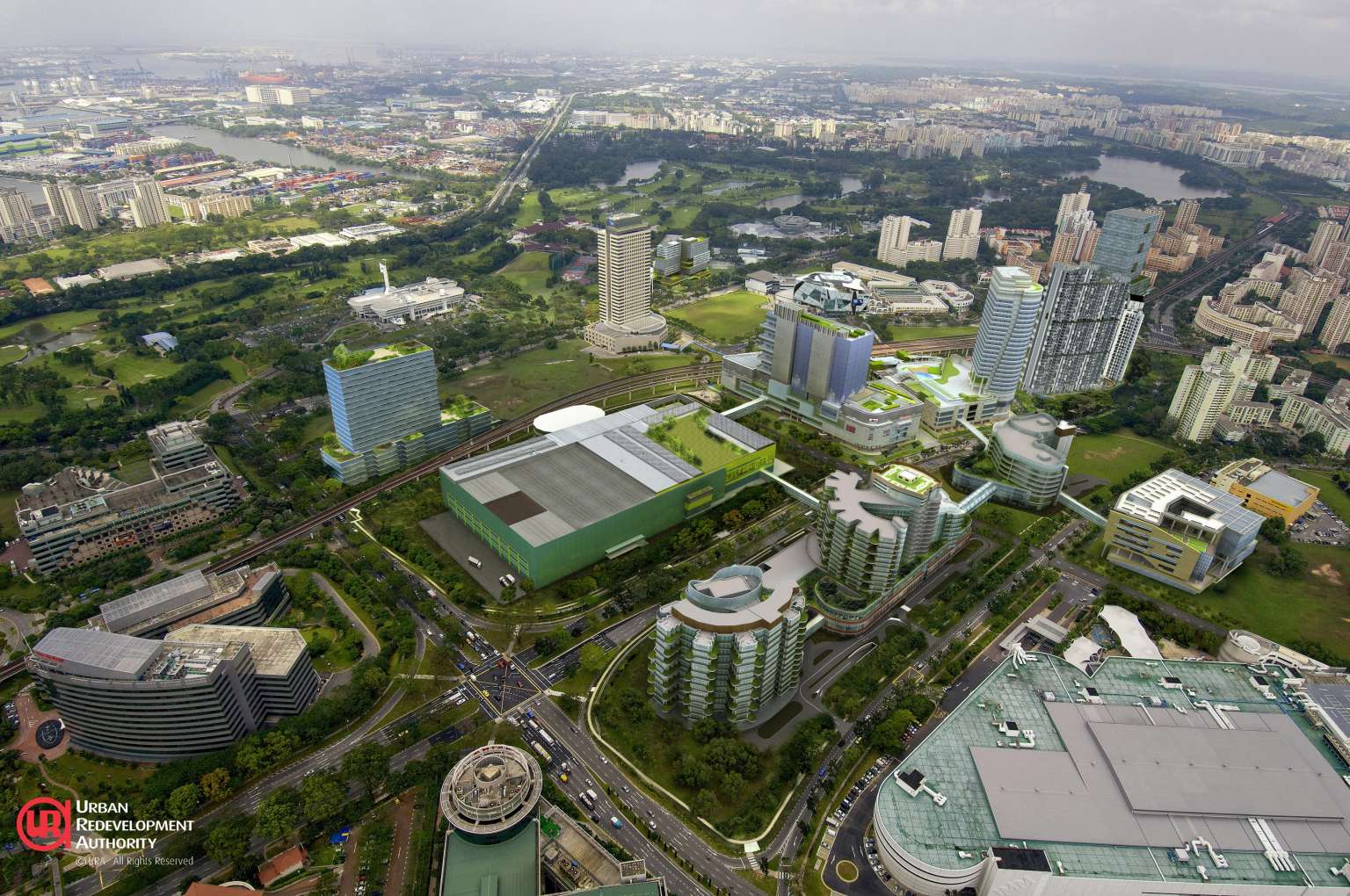District cooling network being considered for future Jurong Lake District
Sign up now: Get ST's newsletters delivered to your inbox

Artist's impression of Jurong Lake District.
PHOTO: URA
Adrian Lim
Follow topic:
SINGAPORE - The Government is exploring the use of a district cooling network for the future Jurong Lake District, similar to what has been implemented in the Marina Bay area.
Instead of individual chilling plant rooms and cooling towers, buildings will tap on a centralised production facility for chilled water, which is used for air-conditioning.
National Development Minister Lawrence Wong said that such a system, which has been running for 10 years in Marina Bay, could be adopted for the Jurong Lake District.
He said that a centralised chilling network provides "greater energy efficiency and more economies of scale".
He was speaking at the official commissioning of the Marina Bay's district cooling network, said to be the largest underground district cooling system in the world in terms of total installed capacity. It is also the deepest in the world, going down to about 25m underground.
The central cooling network serves key buildings in the area, including the Marina Bay Sands Integrated Resort, Marina Bay Financial Centre and Gardens By The Bay. A 5-km long network of pipes delivers 4.5 deg C water to the buildings.
A common services tunnel, also employed in Marina Bay and which distributes utilities such as electricity, water and telecommunication services underground, is also being considered for the Jurong Lake District, Mr Wong said on Thursday.
He said: "It is more expensive with more upfront capital investments involved, but it is cost-effective as it helps to free up surface land and reduce the need for road digging when repair works have to be done."
In addition to being the site of the high-speed rail terminus linking Singapore to Kuala Lumpur, Jurong Lake District will potentially be developed into the island's second Central Business District.
In a speech, Mr Wong said that implementing the district cooling network in Marina Bay was fraught with major challenges, as it was a relatively new concept in Singapore.
"We had to put in high capital investments with uncertain financial returns. Left to the market, this project would never have taken off. " he said.
To de-risk the project, several measures were undertaken, including mandating that developments in the area take up the district cooling system's supply, and regulating the district cooling pricing to ensure it is competitive.
In the case of Jurong Lake District, however, Mr Wong said: "Given the proven benefits of district cooling system, we may need to consider whether it is still necessary for the Government to play the same role, or whether there is more room for free play by the market."
"We are looking into that and will announce details in due course," he said.

